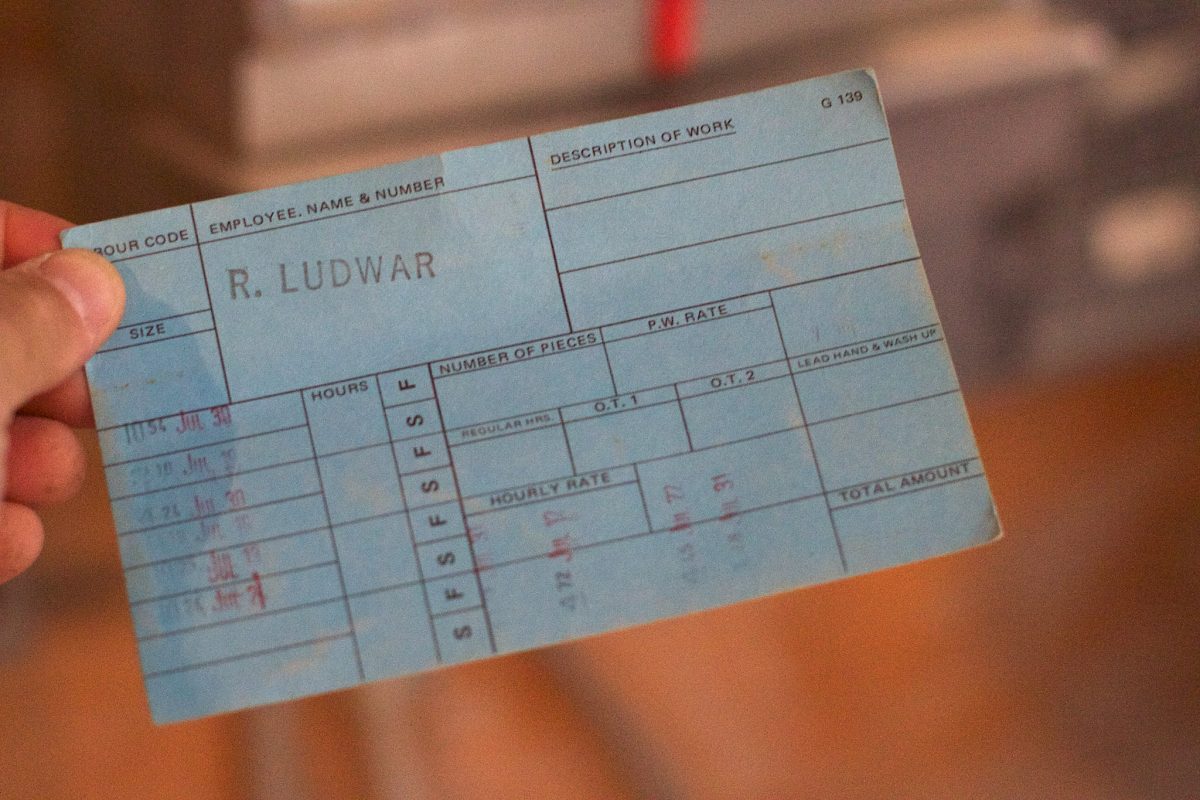
Safe Spaces, Happy Faces: How Employers Benefit When They Prioritise Workplace Security
The Code of Hammurabi, written over 3,500 years ago, was essentially a Babylonian commercial code of conduct around fair pay and transactions and was sealed with a fingerprint to confirm its authenticity. With ancient civilisations embracing biometrics millenia ago, why are we so slow to adopt it now?
In the first part of this two-part series, we examined the origins of the timesheet and the recording of time & attendance in general. Its purpose in ensuring the right pay for the right person for the hours worked and to help avoid worker exploitation. We also touched on the digital revolution and how it has sped up the process, but how it has also failed to curb the converse issue to worker exploitation, that of time theft.
In an interesting quirk of fate, King Hammurabi of Babylonia – the man who invented the timesheet nearly 4,000 years ago – also gave us a hint as to the future of time and attendance: biometrics.
The Code of Hammurabi was not signed with a scrawl of charcoal or a wax seal as we might expect, but with a thumbprint.
While the King may not have been as acutely aware as we are now of the truly unique nature of a fingerprint (or even a partial), he must still have known that signing the document in such a way could be authenticated in some way. While a decent artist might forge a signature, or sculptor forge a seal, it would be incredibly difficult to accurately forge the print of a body part, and therein lies the beauty of biometric identification.
The term “biometrics” relates to criteria specific to an individual’s body and how those criteria can be measured.
We employ biometric systems in our everyday lives when we recognise a friend on the street, or know who is speaking to us when we pick up the phone. Our brains have measured and stored their unique facial features, tone of voice, and speaking patterns.
In terms of machine-readable identification, the most common examples include fingerprinting, iris or retinal scans, or facial recognition technology. Delving deeper, usually within the realms of criminal forensics, we can also examine voice patterns, typing cadence, the way someone walks (gait) and even ear prints!
The biggest drawback of old timesheets and punchcards, as well as more modern swipe cards and keyfobs, is that there is virtually no authentication on who is using them. Just because Dom is flagged as entering the building at 08.59, it doesn’t mean it wasn’t Zoe doing it for him as a favour because he needed to pop to the shop first.
This example, in turn, highlights another issue – fobs and cards can be transferred between individuals, or lost, or stolen. Not only does this facilitate “buddy punching” like in the example above, but presents an inherent security risk. You cannot be sure that what the system says is actually true.
With a biometric time & attendance system, you can be certain that the person who clocks in on the system is who they say they are.
While understandable, this is not something to be concerned about. Almas Industries scanners do not retain a picture of the finger, palm or face but rather analyse partial data – the minutiae such as bifurcations and the endings of furrows and ridges – which is then encrypted as a binary template.
An image of your biometric data is not stored, and this binary template is simply a mathematical representation of certain parts of the face, finger or palm.
In a word, no.
While it may have been possible on early systems, using everyday objects and a sheet of film to mimic the pattern of a finger or face, modern systems use multispectral imaging to differentiate between human flesh and other organic or synthetic materials.
Liveness detection and anti-spoofing technology protects against 3-d masks or high quality images being use.
When a user presents their face, palm or fingerprint against the reader, it matches against the template. Our readers can detect the films and prostheses typically used by fraudsters, rendering them useless.
Once scanned in, only your company will have access to the information and software. The information is not uploaded to the cloud or any third parties or government or law-enforcement agencies.
The partial scans are classed as personal information and therefore bound under the rules of GDPR. All our readers and software are fully GDPR compliant.
You do, of course, need to make sure that a Privacy Impact Assessment is conducted, if you’d like further information on this, please ask your Almas security consultant.
We’ve spoken at length about the problems of non-biometric systems – first and foremost the lack of authentication at the point of use. Keyfobs, swipe cards, and punchcards can all be used by someone other than the intended user. It may be “innocent” behaviour such as covering for a friend, or something more circumspect should it be stolen or lost.
The use of biometrics stops this in its tracks. Biometrics cannot be stolen and are completely non-transferable.
As we start to find our feet in this new era of Covid-19, accuracy is of paramount importance not just to your productivity and bottom line, as we looked at in part one, but to the health and wellbeing of your company and its workers.
Until a few months ago the idea of pressing your finger to a scanner wasn’t a concern. The global outbreak of the novel coronavirus has forced us all to pause and consider in much more depth what we’re doing, who we’re seeing, and what we’re touching.
Scientists have shown that physical contact is one of the primary methods for transmitting the virus. We touch our faces on average 16 times every hour. Those fingers then touch keyboards, levers, buttons, countertops, handrails, and just about anything else you can imagine. Every other person working there will also touch many of the same communal points. If just one person has the virus, those common touchpoints are where it’s most likely to be picked up by someone else, and then spread further through the same points. We would argue that a fingerprint reader could be a conscious touch point that is either preceded or followed by a disinfection process in the form of a wall mounted sanitiser, thereby actively reducing risk, but we understand that at the moment some people are reluctant to touch communal objects.
Biometric technology provides us not only with the option of contactless entry and logging but being able to detect other criteria which either should or should not, permit entry.
While fingerprint readers require contact to register ‘clocking in’, face and palm readers do not. They retain the same type of information in the same way and just as securely, plus they can scan the binary biometric template from a distance away, hugely reducing the risk of contact-based virus transmission.
But what if you could do more than that?
Advances over the last few years now mean that accurate, usable facial recognition is no longer the preserve of science fiction or films and TV shows.
Facial recognition requires even less proximity than palm readers, with a verification speed of between 0.2- 0.5s per person (depending on the reader) at a range of up to 2 metres – perfect for maintaining social distancing from the outset. It must be pointed out that siting of readers is important to prevent staff being picked up by the sensor as they just pass by the face scanner, rather than when they are clocking in or out; your Almas security consultant will advise on location.
Once again, the biometric information is encrypted and stored just as securely and bound by GDPR. The system will log who is entering and leaving your building with greater than 99.9% accuracy, allowing easy access to fire attendance logs as well as new requirements for contact tracking and tracing should an outbreak occur in your business.
We mentioned in the first part of this article the problems presented by “presenteeism” as well as the risks of time theft from contractors. Our facial recognition and off-site scanners and software allow contractors and remote-working employees to clock-on and clock-off as easily as if they were there at your premises. The mobile app provides an effective way for home working employees to clock in on a daily basis.
These activities can be backed up with photographic evidence as part of the procedure, as well as providing GPS co-ordinates so you can see they are where they say they are. They also provide a good audit trail for field based employees if client’s query that they attended a certain site at a certain time.
Biometric time & attendance monitoring is just one part of a wider, more comprehensive security solution, however.
We don’t know how long this pandemic will endure or how long lockdown and social-distancing will be in effect. Nor do we know if we’re likely to face a third wave or another like it in the future.
What we do know is that the way we approach things has changed, and now is the time to get prepared for whatever the future may hold.
You want to be sure that who you let into your building is supposed to be there – that’s the whole point of access control – but why not take it further and be reasonably sure that they’re not unwell?
Facial recognition systems (depending on model) can detect a raised temperature – one of the most consistent signs of infection – in under a second. It may be that the person had to run to get to work on time (they can’t get their friend to sign in for them any more!), but it’s surely better to check out a false positive and take a second reading than it is to let someone in who is carrying the virus and putting you, your other employees, and your business at risk.
Mandatory face masks are not the norm, yet, but that’s not to say they won’t be in the future. You may think that would cause a problem for facial recognition readers, but that’s certainly not the case with ours.
Masks have been part of the uniform in industries such as pharmaceuticals and microelectronics for years, and they have a need for access control as much as anyone else.
Our readers can recognise not only a person, but whether or not they’re wearing a mask, and either clock them in, or refuse their punch and entry if they are not donning a mask.
We stand at a turning point in world history, and it is giving us an opportunity to take stock. To look back at what we’ve done and what we’re doing, and see how we can change it for the better. Not just for our business and our bottom line, but for our employees too.
Biometric scanners and software not only provide fast and accurate access control and an easy way to manage time & attendance records and collate payroll for staff both on and off-site, but allow you to eradicate the financial and social impact of time theft in its most common forms.
With our contactless biometric and facial recognition technology you no longer need to make a choice between accurate time & attendance records and keeping your employees and business safe.
Here at Almas Industries we’ve been working on biometrics for years. It’s what we do, and we’re good at it. Contact the team today to discuss biometric access control, biometric readers, or facial scanners for your business.


